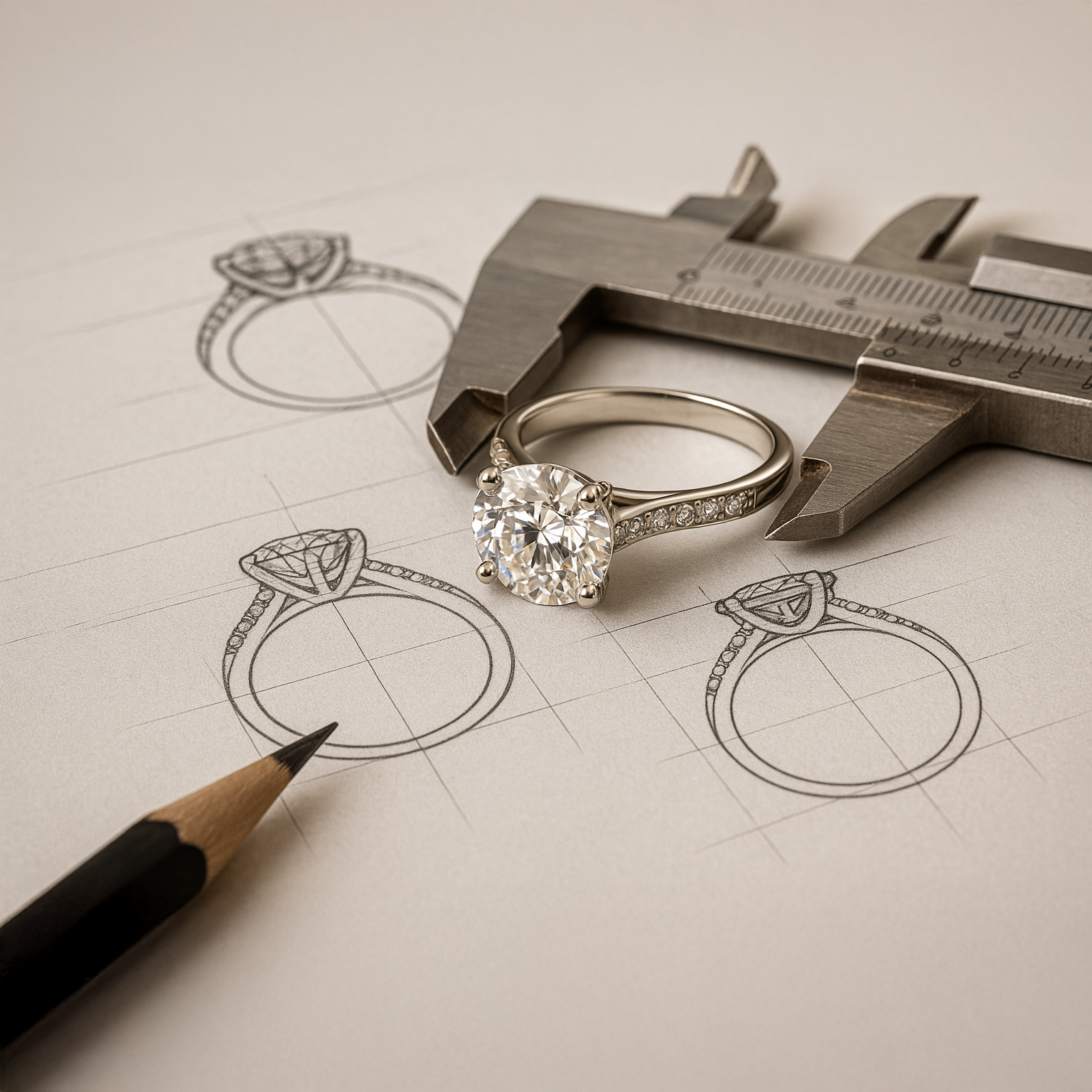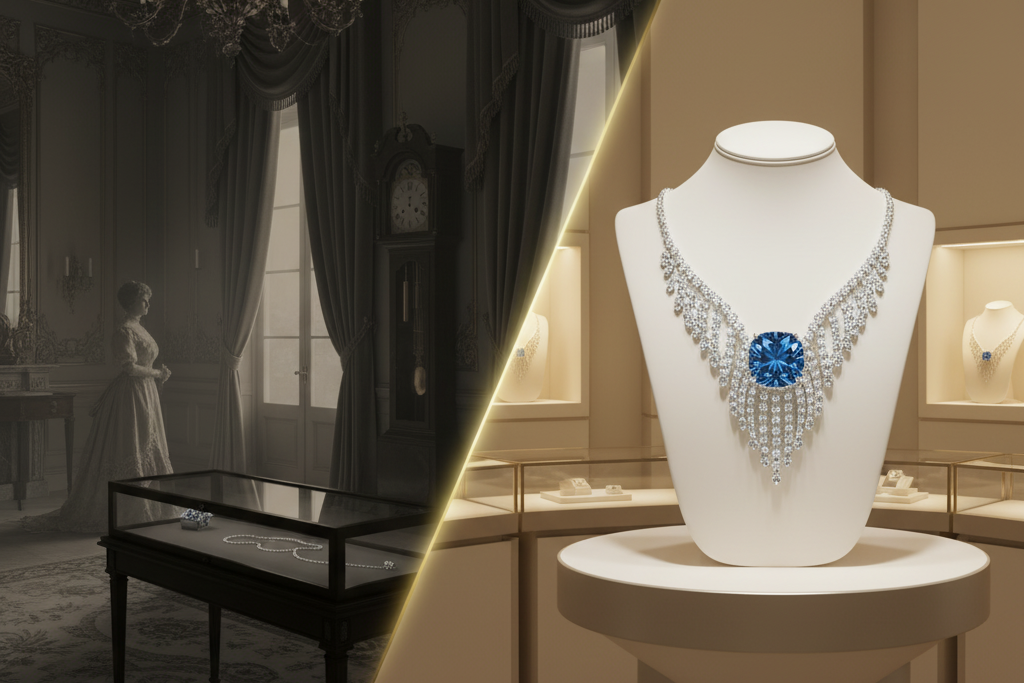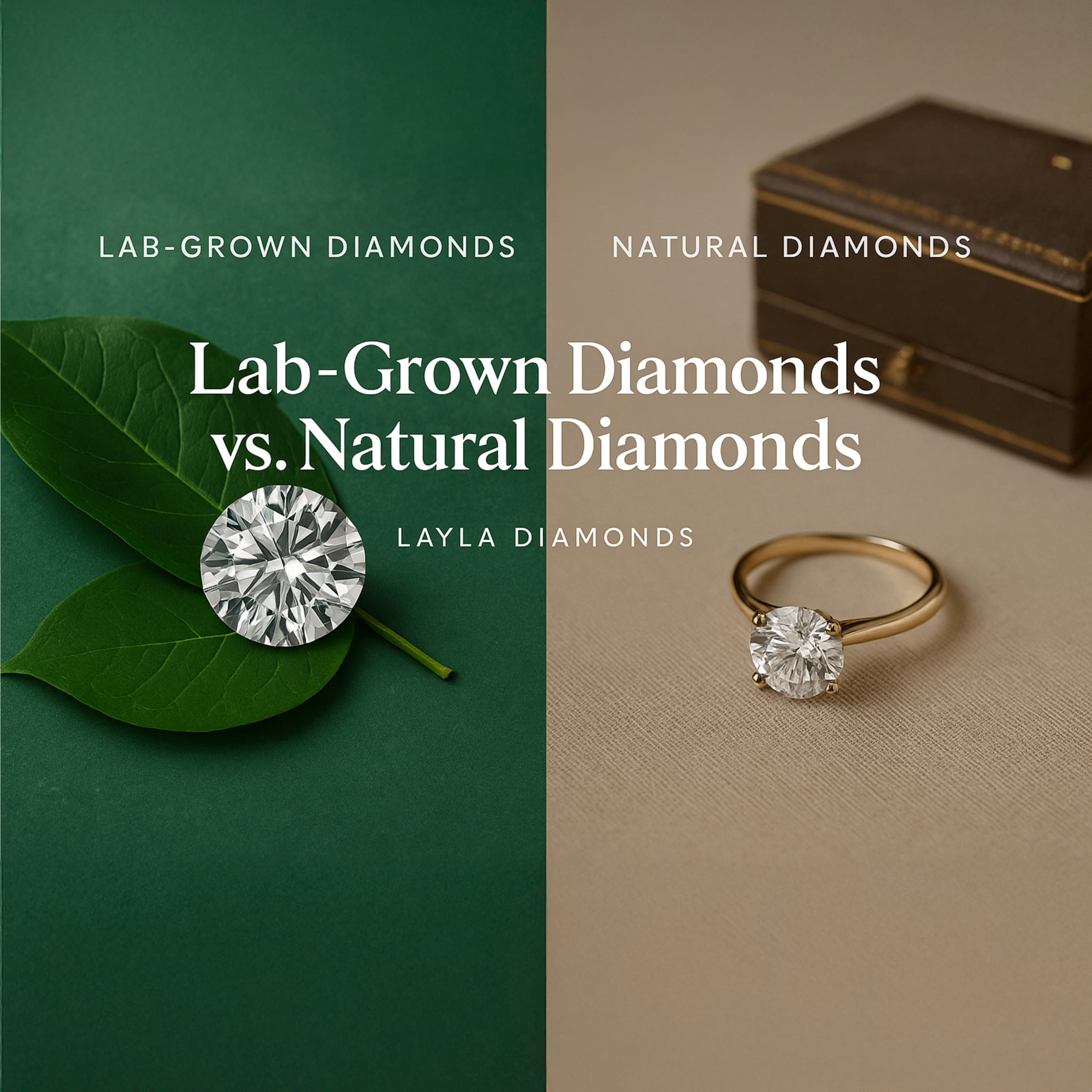Why I'm Obsessed with Oval Engagement Rings (And You Should Be Too)
Why Everyone Is Talking About Oval Engagement Rings
Oval engagement rings have surged in popularity — not only because they photograph beautifully, but because they balance brilliance, size presence, and elegance. Below, we explain why ovals are so loved, what to look for, and how to choose one that sparkles from every angle.
Why people love oval engagement rings
Universally flattering
The elongated outline has a naturally slimming, lengthening effect that many find flattering across hand and finger types. The softly rounded ends read feminine and elegant without feeling fussy.
Bigger look per carat
Thanks to a generous face-up spread, ovals typically appear larger than round diamonds of the same carat weight — more finger coverage without increasing carat.
Timeless yet modern
An oval blends classic brilliant-cut sparkle with a distinctive silhouette — timeless and contemporary at once. The oval cut dates back to the 1960s, created by master cutter Lazare Kaplan, and has remained a favourite ever since.
Optical brilliance & shape advantage
Brilliant by design: Many oval cuts use a round-brilliant facet blueprint (often 58 facets), so a well-cut oval can rival a round for life and fire.
More presence for your carat: The elongated outline typically offers greater surface “spread” on the finger — giving a visibly larger look at the same carat weight.
Flattering proportions: The vertical line draws the eye lengthways, creating the illusion of longer, slimmer fingers.
In short: a beautifully proportioned oval blends science (light return) with style (elegant elongation) for maximum impact.
Understanding the bow tie effect (and how to avoid a harsh one)
Look closely at most oval diamonds and you’ll notice a shadow across the centre — the bow tie effect. Every oval displays it to some degree because of how light travels through an elongated shape.

Comparison of two oval diamonds showing the bow tie effect — darker vs minimal.
- Why it happens: Bow ties appear when light is lost through the diamond’s pavilion facets, producing a central shadow.
- What to prefer: A subtle, translucent “white” bow tie adds depth and can be charming. Avoid dense, black bow ties that absorb light and make the centre look dull.
- What influences it: The facet design and alignment. In general, denser, well-aligned facet patterns help diffuse the bow tie; shallow or poorly aligned cuts tend to produce stronger black bands.
- Proportions matter: The longer the stone (higher length-to-width ratio), the greater the chance of a prominent bow tie. If you want to minimise the effect, opt for a slightly shorter ratio within the ideal range.
Ideal length-to-width ratio: For a balanced, elegant look with strong light performance, many clients love 1.40–1.50. Lower ratios (~1.30s) look wider; higher ratios (≥1.55) look very elongated and may increase the risk of a strong bow tie.
Sparkle, fire, and light performance
Ovals are a modified brilliant cut, so they can deliver exceptional scintillation and fire. But performance varies dramatically with cut quality, facet alignment, symmetry, and polish. Avoid judging by certificate alone; two GIA “Excellent/Excellent” stones can look very different in motion.
Versatility in design
From a minimalist solitaire to a diamond hidden halo, side stones, or an east–west orientation, ovals adapt beautifully.
- Timeless solitaires and cathedral settings for clean, elevated lines.
- Hidden halos or a diamond bridge for discreet sparkle beneath the centre stone.
- Two-tone sophistication: platinum claws for crispness against warm gold bands.
- Side-stone pairings: tapered baguettes, pears, or petite ovals — or go east-west for a contemporary twist.
Modern popularity & celebrity appeal
Ovals are beloved by style leaders — think Hailey Bieber, Kourtney Kardashian, Blake Lively, and Georgina Rodríguez. Their red-carpet presence has cemented the oval as the modern icon of effortless glamour.
Trend with staying power: No two ovals are the same; ratio, faceting, and setting make every ring unmistakably personal.
What the oval symbolises
The oval’s graceful loop represents continuity and devotion, while its elongated form suggests growth and balance — a quietly powerful emblem for a love that evolves beautifully over time.
The Layla Diamonds touch
- Hand-selected in Hatton Garden: Each centre stone is chosen by our gemmologists for superior light performance.
- Hallmarked authenticity: Your ring bears our signature marks and London assay hallmarking.
- Bespoke details: hidden halos, floating heads, elegant cathedral shoulders, and hallmark engraving options.
- Handcrafted to order: Never mass-produced — made for your story, your proportions, your taste.

Crafted in London • Private consultations • Bespoke design
Key considerations when choosing an oval
- Cut quality first: Prioritise light performance over carat weight.
- Ratio & outline: Aim for 1.40–1.50; check that the outline is pleasing and symmetrical.
- Bow tie: Prefer a subtle/white bow tie; avoid harsh black bands.
- Clarity & colour in context: Balance with cut; evaluate in person if possible.
- Lighting test: Compare stones under different lights and at arm’s length.
- Setting synergy: Pick a mount that enhances your stone’s proportions and sparkle.
Thinking about choosing an oval?
If you’re considering an oval engagement ring, we recommend viewing stones in different lights and comparing length-to-width ratios side by side. This helps you see how the bow tie presents and which proportions feel right to you.
Explore our curated selection to compare proportions, settings and sparkle in person.
Explore Oval RingsFrequently Asked Questions About Oval Engagement Rings
Are oval engagement rings timeless?
Yes. The oval cut was introduced in the 1960s by master cutter Lazare Kaplan and remains one of the most enduringly popular shapes. It blends classic brilliance with a modern, elegant silhouette.
Do all oval diamonds have a bow tie effect?
Yes. Every oval shows some degree of bow tie — a shadow across the centre. Aim for a subtle, translucent “white” bow tie and avoid harsh black bow ties that absorb light and dull the centre.
Why do oval diamonds have a bow tie?
The bow tie occurs because of how light interacts with the elongated shape. Bow ties appear when light is lost through the pavilion facets, creating a central shadow. Better-cut ovals with denser, well-aligned facets minimise it. Longer stones with higher length-to-width ratios are more prone; choosing a slightly shorter ratio within the ideal range helps reduce it.
What is the ideal length-to-width ratio for oval diamonds?
A widely preferred range is 1.40–1.50 for a balanced, elegant look. Lower ratios (~1.30s) appear wider; higher ratios (≥1.55) look very elongated and may increase the risk of a stronger bow tie.
Do oval diamonds look bigger than round diamonds?
Often, yes. Ovals typically show a larger face-up spread than round diamonds of the same carat weight because of their elongated outline and surface area.
Why are oval engagement rings so popular right now?
They’re flattering, offer impressive size presence, and feel timeless yet modern. Visibility from Hailey Bieber, Georgina Rodríguez, Blake Lively, and Kourtney Kardashian has also boosted demand.




